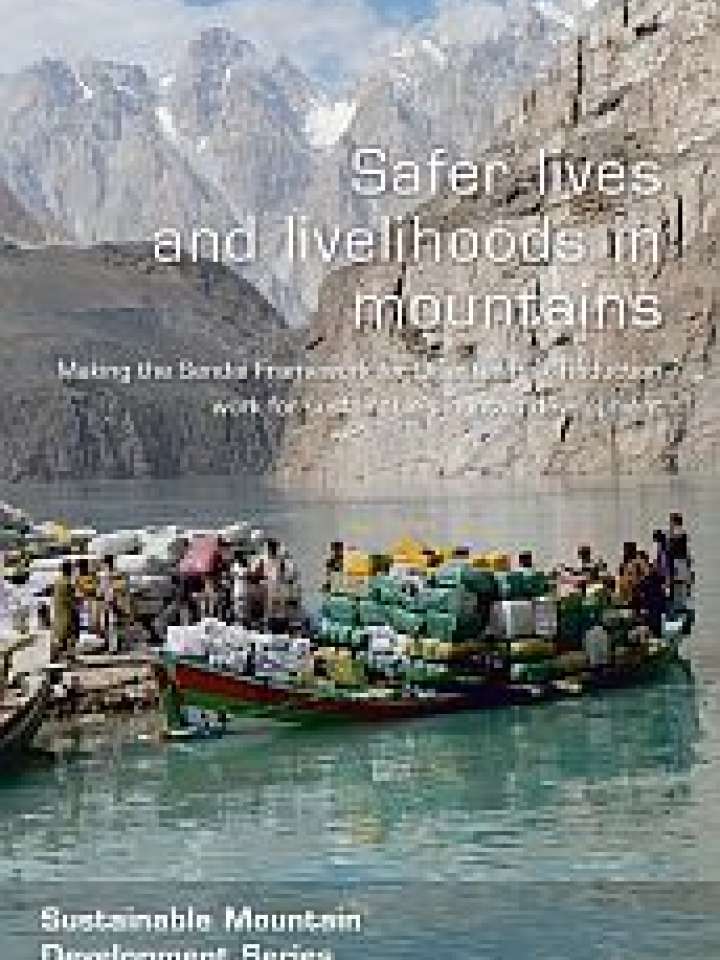Safer lives and livelihoods in mountains: Making the Sendai Framework for Disaster Risk Reduction work for sustainable mountain development
This publication presents 15 case studies from mountain regions around the world, illustrating the efforts and experiences of public and private actors to implement the Sendai Framework’s four priorities for action. Messages for policy-makers emphasize the need for mountain-specific disaster risk reduction policies – ideally, integrated with development activities and climate change adaptation measures – to make livelihoods in mountains and beyond safe.
Making the Sendai Framework for Disaster Risk Reduction 2015–2030 work for sustainable development in mountains means giving special attention to the specific challenges mountain people face. Many mountain people are vulnerable and exposed to multiple natural hazards. The frequency and magnitude of disasters is increasing, with contributing factors including population growth, urbanization, economic development, ecosystem degradation and climate change. Moreover, hazards occurring in mountains not only threaten the lives and livelihoods of people in remote rural settlements and in the growing urban centres in mountains – they also affect people in the lowlands.
Explore further
